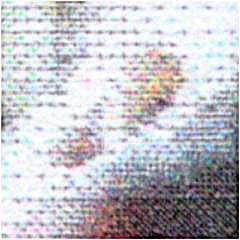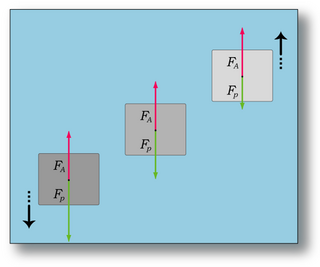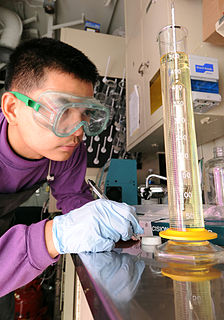 W
WBone density, or bone mineral density (BMD), is the amount of bone mineral in bone tissue. The concept is of mass of mineral per volume of bone, although clinically it is measured by proxy according to optical density per square centimetre of bone surface upon imaging. Bone density measurement is used in clinical medicine as an indirect indicator of osteoporosis and fracture risk. It is measured by a procedure called densitometry, often performed in the radiology or nuclear medicine departments of hospitals or clinics. The measurement is painless and non-invasive and involves low radiation exposure. Measurements are most commonly made over the lumbar spine and over the upper part of the hip. The forearm may be scanned if the hip and lumbar spine are not accessible.
 W
WIn electromagnetism, charge density is the amount of electric charge per unit length, surface area, or volume. Volume charge density is the quantity of charge per unit volume, measured in the SI system in coulombs per cubic meter (C⋅m−3), at any point in a volume. Surface charge density (σ) is the quantity of charge per unit area, measured in coulombs per square meter (C⋅m−2), at any point on a surface charge distribution on a two dimensional surface. Linear charge density (λ) is the quantity of charge per unit length, measured in coulombs per meter (C⋅m−1), at any point on a line charge distribution. Charge density can be either positive or negative, since electric charge can be either positive or negative.
 W
WDots per inch is a measure of spatial printing, video or image scanner dot density, in particular the number of individual dots that can be placed in a line within the span of 1 inch (2.54 cm). Similarly, the more newly introduced dots per centimeter refers to the number of individual dots that can be placed within a line of 1 centimeter (≈ 0.393 in).
 W
WKnot density is a traditional measure for quality of handmade or knotted pile carpets. It refers to the number of knots, or knot count, per unit of surface area - typically either per square inch (kpsi) or per square centimeter (kpsc), but also per decimeter or meter. Number of knots per unit area is directly proportional to the quality of carpet. Density may vary from 25 to over 1000 kpsi, or 4 to over 155 kpsc, where ≤80 kpsi is poor quality, 120 to 330 kpsi medium to good, and ≥330 kpsi is very good quality. The inverse, knot ratio, is also used to compare characteristics. Knot density = warp×weft while knot ratio = warp/weft. For comparison: 100,000/square meter = 1,000/square decimeter = 65/square inch = 179/gereh.
 W
WLinear density is the measure of a quantity of any characteristic value per unit of length. Linear mass density and linear charge density are two common examples used in science and engineering.
 W
WNeutral buoyancy occurs when an object's average density is equal to the density of the fluid in which it is immersed, resulting in the buoyant force balancing the force of gravity that would otherwise cause the object to sink or rise. An object that has neutral buoyancy will neither sink nor rise.
 W
WRelative density, or specific gravity, is the ratio of the density of a substance to the density of a given reference material. Specific gravity for liquids is nearly always measured with respect to water at its densest ; for gases, the reference is air at room temperature. The term "relative density" is often preferred in scientific usage.
 W
WThe Schiehallion experiment was an 18th-century experiment to determine the mean density of the Earth. Funded by a grant from the Royal Society, it was conducted in the summer of 1774 around the Scottish mountain of Schiehallion, Perthshire. The experiment involved measuring the tiny deflection of the vertical due to the gravitational attraction of a nearby mountain. Schiehallion was considered the ideal location after a search for candidate mountains, thanks to its isolation and almost symmetrical shape.
 W
WThe stress–energy tensor, sometimes called the stress–energy–momentum tensor or the energy–momentum tensor, is a tensor quantity in physics that describes the density and flux of energy and momentum in spacetime, generalizing the stress tensor of Newtonian physics. It is an attribute of matter, radiation, and non-gravitational force fields. This density and flux of energy and momentum are the sources of the gravitational field in the Einstein field equations of general relativity, just as mass density is the source of such a field in Newtonian gravity.